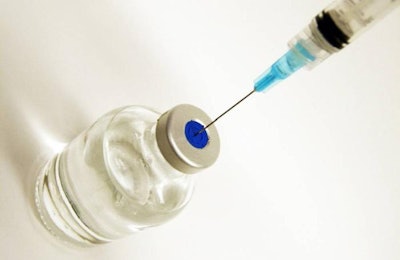
The U.S. Department of Agriculture (USDA) is making preparations to turn back and stop another outbreak of highly pathogenic avian influenza (HPAI). One of the most powerful tools in fighting another U.S. outbreak of HPAI may be the USDA’s stockpile of poultry vaccines.
During the WATT Global Media webinar, "Vaccination as Part of an Avian Flu Eradication Plan," Dr. David Suarez, research leader for exotic and emerging avian viral diseases research at the USDA’s Agricultural Research Service (ARS), spoke about a stockpile of vaccine the agency is building. The National Veterinary Stockpile would only be tapped in the event of a widespread outbreak of HPAI – like the one that spread across the country between December 2014 and June 2015 – but it is a key part of the USDA’s response plan.
Suarez, who’s been with the ARS since 1995, said empirical research from two decades of fighting HPAI outbreaks around the world proves that vaccines in combination with other biosecurity measures are an effective way to both stop outbreaks and reduce viral shedding, or the transmission of the virus from one infected bird to an entire flock. So, the agency has decided to stockpile as many as 500 million doses of poultry vaccines in the event of an outbreak.
However, in accordance with U.S. regulations, the USDA can only use vaccines approved and licensed by its Center for Veterinary Biologics. This limits its access to experimental vaccines that have shown promise against extant strains of HPAI. The USDA has limited options because drug companies have very little economic incentive to independently research and produce HPAI vaccines.
“We’re certainly constrained by what the commercial companies are willing to get licensed in the U.S.,” Suarez said. “Because we don’t vaccinate for avian influenza on a routine basis, there’s very little economic incentive for these companies to license in the U.S. because obviously, they don’t want to go through the expense of licensing unless they have a product that can be sold that they can make a profit on.
“That really has constrained what is available in the U.S. In some countries, like in China and Mexico, they actually have some products available there that are not available here.”
In order to encourage drug companies to produce newer, more-effective vaccines that the USDA can stockpile in the event of a mass immunization, the agency released a request for proposals for avian influenza vaccines in 2015.
The two avian influenza vaccines purchased by USDA Animal Plant Health Inspection Service (APHIS) for the stockpile had different costs. The vaccines are being added to the stockpile at costs to USDA of $0.06 and $0.125 per dose by Ceva Animal Health and Harrisvaccines, respectively.
The agency released a second request in November. Suarez said the USDA may issue three more similar requests in the near future where APHIS may purchase additional doses of vaccine. So far, the agency has purchased 148 million doses for $12 million.
Beyond the vaccines already stockpiled, Suarez said he thinks there are new vaccines being developed that will be released soon. He believes the existence of the National Veterinary Stockpile has played a positive role in advancing the development of new vaccines in the U.S. The stockpile, at the very least, he said, gives the USDA the option to immunize with proven and reliable vaccines in the face of another HPAI outbreak.
The USDA has not yet made any decision on mass immunization. However, it has established a criteria for how it would immunize if that decision is made in the future.


















